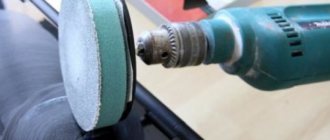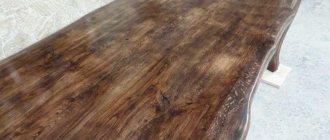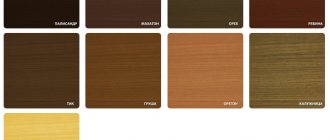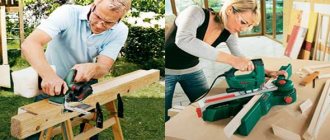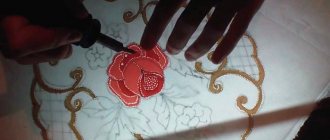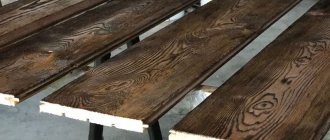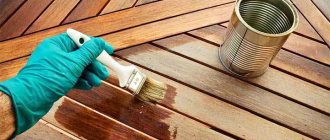Modern power tools are easy to use, but few people know all of their functions.
For example, a suitable sanding drill attachment can be used to make it easy to handle tedious work without spending a lot of effort on it.
Since there are all kinds of drill attachments, we suggest you take a closer look at them.
Advantages and weaknesses
Many manufacturers produce sanding attachments, but not all make sure that the product is reliable.
In competition, preference is given to making products cheaper, so quality suffers.
A third-rate tool will not last long, so you should not focus on the minimum cost. Although the price of high-quality attachments may vary significantly, such a purchase will still be less expensive than purchasing a special tool. Let's pay attention to some criteria.
Advantages
- In some cases, only with the help of this device can you sand a hard-to-reach surface area.
- Convenient for cleaning small parts.
- Devices for an electric drill are cheaper than specialized tools and accessories.
- You can make many sanding attachments yourself.
Flaws
- The device is less convenient to use than a specialized tool.
- You won't be able to work with some attachments without some skill.
- Poor performance.
- Sometimes you can’t do without a drill with adjustable chuck rotation speed.
Since the benefits are more significant, the attachments are popular and used by many people.
Where can it be used
Depending on the type of sanding attachment you purchase, you can use it to:
- clean metal from rust;
- remove paint from iron;
- polish metal;
- polish painted surfaces;
- polish wood parts exposed with varnish;
- polish glass;
- grind the edge of the glass;
- grind small parts;
- remove scale, burrs from metal and correct other defects in places where it is not possible to do this with another tool;
- perform grinding of products in places where grinding cannot be done with another tool.
This is an incomplete list that could be expanded.
Characteristics and application of angle drill bits
The category of angle drill attachments includes several types of removable devices for performing various operations. Some bits are designed to create holes in places where a tool with a regular drill cannot reach. There are nozzles with adjustable and stationary angles. In the second case, the device is rotated 90° and fixed in this position.
Corner fixtures can also be used as stops. In fact, this attachment simultaneously performs two functions: it limits the depth of the hole being formed and ensures the required position of the drill, resulting in an accurate angle.
Angle attachments for drills are stationary and adjustable
In addition, you can find a screwdriver attachment for a drill on sale. It has a more complex structure than the usual version. Such devices allow you to tighten fasteners (screws) at different angles.
Important! The attachment for tightening fasteners can only be used with those tool models in which it is possible to reduce the speed of rotation.
Angle-type nozzles are usually sold in kits that include tips of various diameters. Thanks to this, you can install screws and self-tapping screws of different sizes. In rare cases, there are removable attachments that allow you to turn an electric drill into an angle grinder.
What types of devices are there?
Unlike attachments for grinders, any device for a drill is equipped with an axis fixed in the chuck.
Plate
Most drill grinding attachments are made of plastic. They are primarily intended for use in an angle grinder, but thanks to the adapter they can be mounted in a tool chuck.
This type of fastening is rigid and therefore not applicable in all cases. For example, even with a slight displacement of the nozzle, its edge can bite into the surface being sanded, leaving deep grooves.
For this reason, it is more convenient to use a hard plastic attachment by holding the drill still, as in the following illustration.
A rubber attachment is more convenient when working with a drill - thanks to its flexibility, accidental damage to the surface being worked is eliminated when the drill is tilted or pressed excessively.
Another type of similar grinding tool is made with a movable pin mount, but due to the high cost of the latter, it is not in great demand.
Cup
Structurally, the cup attachments are practically no different from each other, but the brush itself can consist of metal (steel, brass) wire or polymer abrasive bristles.
Each brush has a certain hardness and is used strictly for its intended purpose, established by the manufacturer - you can grind metal (removing traces of corrosion), wood and other materials.
Working with such a tool is fraught with some difficulties - by choosing the wrong angle, you can ruin the soft material being processed, and the drill itself constantly strives to move to the side when pressing the device over its entire area.
Disk
These attachments are similar to cup attachments, but the direction of the bristles is different - to the sides. Most often they are used when it is necessary to process material in hard-to-reach places.
Drums
This device resembles a drum in appearance, and thanks to this similarity it received the name of the same name. Such a drum attachment is a cylinder with sandpaper attached to the outer wall.
This device is secured by tension with a special bolt or fixed by pumping with compressed air. When using an open belt, tension is created by a rotating screw that pulls on the sandpaper.
With the help of drum attachments, it is not difficult to sand parts made of wood and metal. A grinding attachment with fine particles of abrasive material can be used when processing the edge of glass. Very convenient for grinding round and oval holes.
Fan
This attachment is made in the form of a disk with fixed fragments of abrasive material. This feature of the tool significantly expanded the range of sizes of processed parts, grinding the cavities of small and large holes. Thanks to the flexibility of the blades, parts of various shapes can be sanded.
End
Such nozzles have different shapes, and the working part can be made of various materials.
Designed for starting or finishing processing of holes and the inside of shaped workpieces. Jewelers and dentists use similar devices, only in miniature size.
Soft
When polishing a workpiece, round foam rubber, felt or leather attachments fixed on an axis can be used. Such a device wears out quickly; it can be used to polish metal or a coating exposed by varnish/paint to a mirror shine. The device is matched directly to the material being polished.
Read also: Density of tungsten and gold
Homemade devices
It is not only the desire to save money that drives a person when creating a homemade nozzle - sometimes the necessary device simply cannot be purchased, and then one has to design and invent it. In this section we will show several options for attachments that can be made at home using improvised materials.
Based on Automotive Valve
To make such an attachment you will need one or more flat bottom car valves. It is better to make a larger nozzle from a truck exhaust valve.
The surface must be degreased and a head of the desired shape must be glued, which can be made of wood, dense foam, rubber and other suitable material, and then glued to the valve with epoxy or polyurethane glue.
Now you need to cut out circles from sandpaper. The nozzle turned out to be 5.5 cm wide - cut out the same circle for it.
Not reaching the center, cuts are made on the sides and adjusted so that each petal overlaps the other (as this device rotates).
Hot melt adhesive was used to glue the sandpaper.
After gluing the sandpaper, the edges of the petals were secured with staples.
The nozzle did an excellent job, but it quickly clogged because the sandpaper used was fine-grained.
Hence the conclusion - you need to make several attachments so that you can perform different types of work.
Simple screw device
To make this attachment you will need a long screw, 2 washers, a nut, and several pieces of sandpaper.
A washer is placed on the screw. After cutting the sandpaper into squares, a hole is made in the middle, and all the pieces are put on the screw. Then comes the turn of the second washer, and this entire set is clamped with a nut.
By inserting the device into a drill, you can grind the cavities of wooden parts with it.
The disadvantage of such a device is that the threads are jammed by the drill chuck, which creates a problem with re-applying sandpaper. The unnecessary part of the thread can be removed or 3 slots can be made on the screw - our homemade device will be clamped with a drill chuck.
Polishing device
As in the previous case, we will need a screw, washers and a nut, only felt will be used instead of sandpaper. Having marked a piece of felt, cut out circles of the same radius from it.
Holes are made in the center of the workpieces, they are threaded onto a screw, and then clamped with a nut. The finished device is inserted into the drill chuck.
Felt alone will not polish the part, so after turning on the drill, rub the attachment with Goya paste. After this you can start working.
For the purity of the experiment, an old and rusty wrench was used. As you can see in the photo, after a short polishing, the treated area was effectively cleaned in a short period of time.
This polishing attachment can work with both flat and shaped parts, but it will not cope even with small recesses.
Leather circle
As in the device described above, leather can be attached instead of felt, resulting in a device for straightening wood cutters.
We use a file
A round file can be used as an attachment by removing the handle from it and holding the shank in the chuck. It is better to secure a file of small diameter to the base.
Using this device, it is convenient to grind holes and semicircular depressions.
Epilogue Regardless of whether you use a purchased drill attachment or make one yourself, it can be an invaluable assistant in many jobs.
The main purpose of a drill when working with wood is to drill holes. However, this tool is much more functional than many people think. To expand its functionality, special wood attachments are used, which, in fact, is the subject of this article.
Electric drill with attachment
Next, we will look at what drill attachments exist for woodworking and for what purposes they are used.
Features of using grinding attachments
The drill is often used when performing construction and repair work. Having different attachments for the drill, it can not only drill, but also grind, polish and clean surfaces.
Grinding attachments are used in different cases:
- For polishing metal and wood, can be used on painted or varnished surfaces;
- Grinding small metal products or those located in difficult places;
- Treatment of primed surfaces;
- Cleaning from rust, old varnish or paint;
- Cleaning hard-to-reach places from defects;
- Polishing glass and grinding its edges.
Different attachments are used for each purpose, but in general, purchasing them will cost less than purchasing an additional grinder.
“Plate” Source instrument-club.ru
Using sanding attachments on a drill has its pros and cons. The first include:
- Possibility not to buy additional equipment. If you only need to clean the surface once during repairs, it is better to use an existing drill rather than buying a device that will be useless in the future.
- Low price of the nozzles themselves. You can buy many types to work with different materials.
- A large selection of attachments makes it easy to choose the right one for a specific job. Diversity allows you to replace several tools at once.
There is only one drawback: in comparison with professional tools, a drill with an attachment has low speed and productivity. It will not cope with a huge amount of work, but will perform well during repairs or construction in a private house or garage.
“Bowl” Source mozmarket.ru
See also: Catalog of companies that specialize in finishing materials and related work
Types of nozzles
Not everyone knows that with the help of attachments, in addition to drilling holes with a drill, you can perform many other operations, such as:
However, it should be said right away that attachments are not a complete replacement for special equipment. The quality of operations performed with their help is inferior to individual instruments. However, in some cases they can significantly simplify wood processing with your own hands.
Below we will take a closer look at all types of attachments for performing the above work.
Drill Drum Attachment for Sanding Wood
Sanding and polishing
There are many types of attachments for grinding and polishing wooden surfaces, the main ones are listed below:
| Type of transaction | Types of nozzles |
| Grinding | Nozzles of this type are a rod with a grinding material attached to it, which can be used as: |
- Sandpaper;
- Special brushes;
- Rigid fabric such as felt.
According to the type of design and shape, grinding heads are of the following types:
- Disc discs - made by analogy with discs intended for conventional grinding machines, the only thing is that instead of threads they have a pin for fixing in the chuck.
- Cup - they are a cup with a brush. They are usually used for removing old paint from wood and other rough treatments.
- Drum type - they are a cylinder with sandpaper attached to the walls. Such heads can be used to process the surface inside the holes, as well as the end of the boards.
- Petal – a large number of sandpaper petals are attached to the rod of this tool. With the help of such attachments, radius grinding of wood with a drill can be performed, as well as processing of parts with complex surfaces.
Read also: Table of roller bearing sizes by diameter
Based on the degree of softness, polishing tips are divided into the following types:
In addition, they can vary in shape and size, which allows you to choose the most optimal tip for polishing a particular type of surface. For example, conical and thin cylindrical nozzles can be used to polish holes.
Felt tips for polishing
The choice of nozzle in this case depends on the operation being performed. For example, if you need to sand a surface in a hard-to-reach place, an excellent option is a sanding attachment on a drill for petal-type wood. If you need to clean the surface from paint or renew it, you should give preference to cup attachments.
Making large diameter holes
To make large diameter holes, several types of nozzles are used:
- Feather drills - thanks to the flat cutting part and special sharpening, they allow you to make holes in wood, chipboard, plywood and OSB with a diameter of up to 60 mm. It should be noted that feather drills are available not only for wood, but also for metal.
Attachment with a set of wood crowns
- Wood drill bit – allows you to drill holes in wood with a diameter of up to 100 mm.
- Forstner drill – has a centering tip. Using such a drill, you can make blind holes, for example, for installing hinges in furniture making.
In the photo - Forstner drills
Advice! When making holes in chipboard and other similar materials, do not press the drill too hard, as this can lead to chips and cracks.
It must be said that there are special devices on sale that allow you to change the drilling angle. Their purpose is to provide ease of drilling in hard-to-reach places.
Cylindrical wood cutter for drill
Milling
With the help of special tips, the drill can even be used for milling wooden parts.
There are different types of cutters (cutters):
- Cylindrical;
- Face;
- End;
- Disk;
- Shaped, etc.
The choice of cutter depends on the type of operation being performed. For example, if it is necessary to make grooves in a part, use disc cutters for wood drilling. To make complex cuts, it is better to use shaped cutters.
It should also be noted that cutters differ in the shape of the teeth, which are:
- Pointed;
- Backed.
The good thing about backed teeth is that, if necessary, they can be resharpened, while pointed teeth cannot be restored.
Wood cutting attachment
cutting
The attachment on a drill for cutting wood is a rather complex mechanism that works on the principle of a jigsaw. It can be used to cut wood up to 20 mm thick, as well as plywood and chipboard.
In addition, the attachment can be used to cut plastic and even steel. Thus, this device will be useful to every home craftsman, unless, of course, there are special tools for cutting a particular material.
However, it should be noted that the price of such a nozzle is quite high, which is explained by the complexity of its mechanism.
Advice! Before making an internal cut with a jigsaw attachment, you need to drill a hole with a diameter equal to the width of the file.
Nozzles for screwing in self-tapping screws
Screwing in self-tapping screws
The nozzle for screwing in self-tapping screws is the simplest type of tip. However, it should be noted that it can only be used with those types of drills that have a speed reduction option.
These products are usually sold in sets containing heads of several diameters. This allows you to work with self-tapping screws and screws of different sizes.
Here, perhaps, are all the most common types of nozzles. It must be said that there are also less popular tips, for example, flexible drills on cables, which allow you to make holes in hard-to-reach places, as well as angle attachments, which allow you to turn a drill into an angle grinder. True, they can be found on sale much less often.
Drill with angle attachment
Where are sanding attachments used?
Figure 2. Areas of operation of the drill
Grinding attachments for drills significantly increase the range of application of the device. With such parts, the device can replace a full-fledged grinding machine. This allows you to stop keeping a large selection of different power tools at home and limit yourself to a few components.
Attachments are used for a wide range of work on metal, wood and even concrete. They help clean the surface from rust, old varnish or paint. Suitable for sanding coatings after priming. If necessary, surface polishing materials can be used.
Work performed using grinding devices includes:
- cleaning the surface for subsequent processing or painting;
- getting rid of rust;
- polishing surfaces to a shine;
- boring holes in metal, giving the required shape;
- ridding the part of burrs, excess protrusions and growths.
These are just the main tasks that can be solved using such a tool. In addition to them, there may be other types of work that require a similar type of surface treatment.
To install attachments in a drill and screwdriver, attachments are used that are securely attached to the chuck. But it is worth noting that the screwdriver will not allow you to work comfortably with attachments, as it operates at low speeds.
For the convenience of carrying out some types of work, the drill is fixed in a stationary tripod. In this case, the tool is used as a full-fledged grinding machine.
Basic rules for working with a drill and attachments
When using an electric drill, like any other power tools, the operating instructions and safety regulations must be strictly followed.
Below are the main ones:
- Before processing, the workpiece must be securely secured.
- The nozzle must be securely fixed in the cartridge. If there is play, it is prohibited to work with it.
- When working with a drill, it must be held with both hands, especially for powerful models.
- The pressure should not be excessive.
- It is forbidden to turn on the reverse mode until the drill has stopped completely.
- When working, you must use personal protective equipment - gloves and goggles.
- After completing the work, do not touch the drill or other tip for some time, as you may get burned.
Note! You should not try to make a nozzle or adapter yourself. The fact is that electric drills operate at high speeds, as a result of which a poor-quality or unbalanced attachment can cause injury.
Observing these simple injuries will make the work safe, which is the most important thing when performing any construction operations.
Read also: Specific heat of fusion of brass
Advantages and disadvantages of nozzles
The undeniable advantages of grinding attachments:
- Small price.
- Options for any job.
- Quickly replace a worn-out nozzle with a new one.
- Versatility in the use of the drive - they can be installed on a drill, screwdriver, hammer drill and any other suitable power tool.
- Ability to process areas that are difficult to reach with a special tool.
However, despite the significant advantages of grinding attachments, they also have disadvantages:
- The need to hold the tool equipped with a grinding attachment with your hands.
- Some types of attachments require significant experience.
- The quality of processing will be slightly lower than after using a special tool.
The advantages of attachments clearly outweigh their disadvantages, otherwise they would not have become so widespread. Any attachment is an object consisting of a metal rod (shank) and an abrasive or grinding material attached to it. Depending on the type, the processing material can be applied to the shank using an adhesive method and then, when completely worn out, the tool is completely discarded. Or the abrasive material can be secured to the shank using fasteners, and then only the material itself is replaced.
Conclusion
Thanks to the large number of woodworking attachments available, the drill is one of the most functional tools. It especially makes sense to use all kinds of tips in cases where the need to process wooden parts arises only from time to time. Of course, for frequent and especially professional work, it is necessary to purchase separate tools.
You can get some additional information on the topic discussed above from the video in this article.
The use of special devices clamped in the chuck of this power tool makes it truly multifunctional. For example, you can even cut sheet iron with it. Considering the variety of drill attachments for woodworking, it is unrealistic to go into detail about each of them in one article. We will deal only with attachments that allow using a drill to perform high-quality and quick surface mechanical processing of wood.
What is it? Preliminary cleaning of the surface (rough), removal of burrs, grinding and bringing to a mirror shine (polishing). All other technological operations with wood - milling, drilling, screwing in fasteners, cutting - do not belong to the concept of “processing”. This is what the author proceeds from. The difference in the listed types of work in relation to attachments is in the rotation speed of the drill chuck and the type of device. Which one to choose is decided mainly based on the required degree of processing of the tree and its species (that is, the density of the structure).
Recommendations for work
Figure 10. Sanding
To reliably process a part, it is recommended to follow a number of rules. They will help you avoid making mistakes and eliminate surprises during your work.
It is important to choose the sanding speed. It should be different for each material. Violation of this rule will result in surface damage or completely ineffective operation. The attachment must also match the rotation speed of the drill chuck. To work with grinding attachments, a drill with adjustable speed is suitable.
The surface must be processed in compliance with the angles of inclination. If this is not done, the likelihood of damage will increase. Chips and other negative aspects. For beginners, it is recommended to conduct preliminary training on unimportant parts.
For some jobs, the drill can be rigidly mounted on the table. This will bring a number of positive effects that will help free your hands and ensure more accurate work. Machining hard surfaces requires a lot of effort from the tool. The drill may become hot. You need to take breaks while working to avoid overheating.
During work, a lot of dust or sawdust is often generated. It is very dangerous to be in this area without protective equipment.
Summary
Article Name
Grinding attachment for drill
Description
Article on how to make a grinding attachment for a drill for sharpening drills for wood and metal with your own hands
Author
Sarychev Alexander Viktorovich - forensic construction and technical expert, candidate of technical sciences
Publisher Name
Wikipedia of construction tools
Publisher Logo
- Related Posts
- How to remove the chuck from a drill - detailed instructions
- Drill attachments for car polishing
- DIY stand for drill - detailed instructions, drawings
« Previous entry
Classification of attachments for wood processing
Prices are indicative, in relation to the Moscow region, in Russian rubles
By type of abrasive
- Hard fabric.
- Foam rubber.
- Plastic.
- Sandpaper of different grain sizes.
- Rubber.
- Cord brush.
According to the degree of wood processing
- Abrasive (rough).
- Grinding.
- Polishing pads (soft and super-soft pads).
By execution
Depending on the configuration, the attachments are used not only for surface treatment of wood. They can be used to grind (polish) holes (as a replacement for a sander). This is easy to do with cylindrical (thin) or conical devices.
Plate attachments
Available in several modifications. The difference is in the form of abrasive material. If wood sanding is required, then it is rubber (the more preferable option) or plastic. For polishing, it is advisable to purchase attachments with fine-grained sandpaper fixed on the working part. They can achieve higher quality (fine) wood processing.
Recommendation: Effective processing of wood with a plate-type drill attachment is difficult because it is difficult to hold the drill in a strictly vertical position. To achieve a good result, it is advisable to fix the tool and move the workpiece relative to the working part. The machine for attaching the drill is easy to assemble yourself.
There are nozzles on sale that provide for adjusting the angle of the abrasive mounting pin. But they are quite expensive, and not every store can buy them. Therefore, a machine with the ability to change the position of the drill is a more acceptable solution.
Drum attachments
Mainly used for processing the end parts of wooden workpieces and holes. They have a cylindrical shape and differ in the way the sanding tape is attached - using a bolt or special inflatable blocks. Some types of attachments of this type are also used in everyday life for plucking (at low speed) birds when it comes to a large amount of work.
Cup attachments
The assortment is significant. The differences are in size and abrasive material. These can be either metal “hairs” (hard wire) or thick fabric, leather, felt and even foam rubber. The choice of device is determined by the desired degree of wood processing. If you want to achieve a sharper highlighting of the texture of the material, then the wood pulp is sampled using just such attachments.
A variety of devices in this group are disk attachments. The difference is clear from the figure (the villi are located diametrically).
This type of attachment can also include fan devices. They are also called petal.
The main purpose is to polish wood at the final stage of processing.
Material used
Sanding attachments are made from different materials. You need to select them depending on the surface being treated and the work being carried out. For example, to remove rust and paint you will need a hard attachment, for polishing - a soft one.
3 types of materials are used:
- Soft. They remove primer and putty, traces of rust, and are used for polishing and removing dirt. Thanks to the soft action, the metal does not heat up or deteriorate during operation, which improves the quality of grinding.
Soft Source ebayimg.com
- Emery cloth. The most popular drill attachment for sanding wood. It varies in grain size and roughness, which allows it to be used for different types of work - from rough surface cleaning to finishing details.
- Grinding stones. These are special abrasive stones that are harder and more durable. With their help you can eliminate defects from the surface. They are usually used for preparing and leveling concrete, glass, and ceramics.
When choosing, it is important to focus not only on the material, but also on its hardness and grain size. For example, felt can be used to polish a car.
What to consider when choosing drill attachments
- Using attachments, for example, the same grinding attachments, you can process not only wood, but also other materials - metal, glass, ceramics, and so on. You just need to select the appropriate modification of the device.
- According to reviews from practitioners, identical attachments from different manufacturers can differ greatly in effectiveness and duration of use. Therefore, you should not save on purchasing products from a little-known brand. It is not a fact that such a device will not become unusable after short-term use.
- Even an expensive attachment will cost much less than a special power tool. For example, a grinding machine, for which you will also have to additionally purchase the appropriate accessories (blade, wheel, etc.) depending on the type of product.
- When choosing any attachment, you should focus on the following features of your electric drill: power, chuck size, ability to regulate speed. Otherwise, the ease of use of the device and the high quality of wood processing are not guaranteed.
The article discusses the main types of drill attachments. Each group is available in several modifications; In addition, manufacturers regularly supply some new products to the market. Therefore, the choice of size, configuration, and abrasive must be made for a specific technological operation, especially since it exists and is quite large. This can achieve the highest quality results in wood processing. Considering that it is impossible to foresee everything, especially without extensive practical experience in working with nozzles, it is better to purchase them in specialized stores. Based on the characteristics of the buyer’s drill, the seller will help make the best choice.
| Polishing | Polishing attachments resemble the heads described above, the only difference is that the filler is made of soft materials, which means they provide a finer surface finish. Most often, these products take the form of a disk made of soft material on which foam rubber, felt, felt or other soft filler is attached. |
Advantages and overview of drill attachments for cutting wood and metal
Devices for cutting metal or wood are used in cases where it is not possible to perform this procedure in any other way. In addition, they will be useful if heating the sheet material during cutting is undesirable.
Advantages of attachments over an angle grinder:
Attachments for cutting wood and metal are capable of performing their functions quickly and efficiently
- High quality cut.
- Possibility to make holes of any shape in the material.
- There is no need to purchase consumables (discs for an angle grinder).
- Simple system of use.
- Some attachments can cut sheet plastic of a certain thickness.
- If a cordless drill is used for work, the tool becomes mobile. It does not depend on the power grid and can be used in field conditions.
- Light weight.
Review of drill attachments for cutting sheet metal
Three types of attachments are used for cutting metal sheets: “Cricket”, “Scissors” and “Beaver”. Each of them has its own characteristics, structure and is designed for cutting material of a certain thickness.
When using the “Scissors” attachment on a drill, the rotation of the chuck on the tool is converted into reciprocating movements. As a result of this, a special matrix knocks out a strip in the metal and separates the material. The thickness of this line is 3.1 mm. With this method of cutting sheets, the cut is high-quality and even. The “Scissors” attachment allows you to completely avoid finishing the edges on the metal or reduce it to a minimum.
The Cricket attachment is capable of cutting not only sheet metal, but is also suitable for plastic
The Beaver attachment works in a similar way, only it can be used to make both straight and curved cuts, the minimum radius of which is 12 mm.
The “Cricket” drill attachment can be considered a universal device, since it can be used to cut not only metal, but also plastic sheets. In some cases, it can be used for cutting profile products. The device is equipped with two cutting heads that ensure a perfectly even cut.
Table showing restrictions on material processing by thickness:
| Material type | Recommended thickness, mm |
| "Nibblers" | |
| Stainless steel | up to 0.8 |
| Brass and copper | up to 1.5 |
| Aluminum | up to 2 |
| "Cricket" | |
| Stainless steel | up to 1.2 |
| Steel | up to 1.5 |
| Aluminum | up to 2 |
| Plastic | up to 2 |
| "Beaver" | |
| Stainless steel | up to 1.3 |
| Steel | up to 1.8 |
| Aluminum | up to 2 |
Note! To effectively cut metal using the Scissors attachment, the power of the drill must be at least 2700 rpm. The recommended value for the Cricket nozzle is 1500-3000 rpm (depending on the material), and for the Beaver nozzle – at least 1500 rpm.
The main types of drill attachments for cutting wood
The nozzle designed for cutting wood has a rather complex structure. This mechanism is similar in principle to a jigsaw. Using this device, you can cut wood whose thickness does not exceed 2 cm, as well as cut plywood sheets and chipboards.
In addition, the saw attachment on the drill can be used not only for wood, but also for cutting plastic and thin sheets of steel. For this reason, this device will be a very useful addition to the tool kit in a home workshop. It is worth noting that the cost of such an attachment is very high, this is due to the complex structure of its mechanism.
You can find entire sets on sale that include:
- the nozzle itself (mechanism);
- three reciprocating files of different configurations;
- hex wrench for chuck.
The saw-style drill attachment is suitable for wood, plastic and even thin sheets of steel
Reciprocating files are made of durable plastic. The removable devices included in the kit vary in the length and shape of the teeth. The scope of their application depends on the configuration of these products. There are these types of files:
- for cutting wood;
- for quick cutting on wood;
- for cutting metal (the file is short and has small teeth).
Removable plastic files are lightweight and therefore very convenient to use. The attachments are secured in the lock with a special screw.
